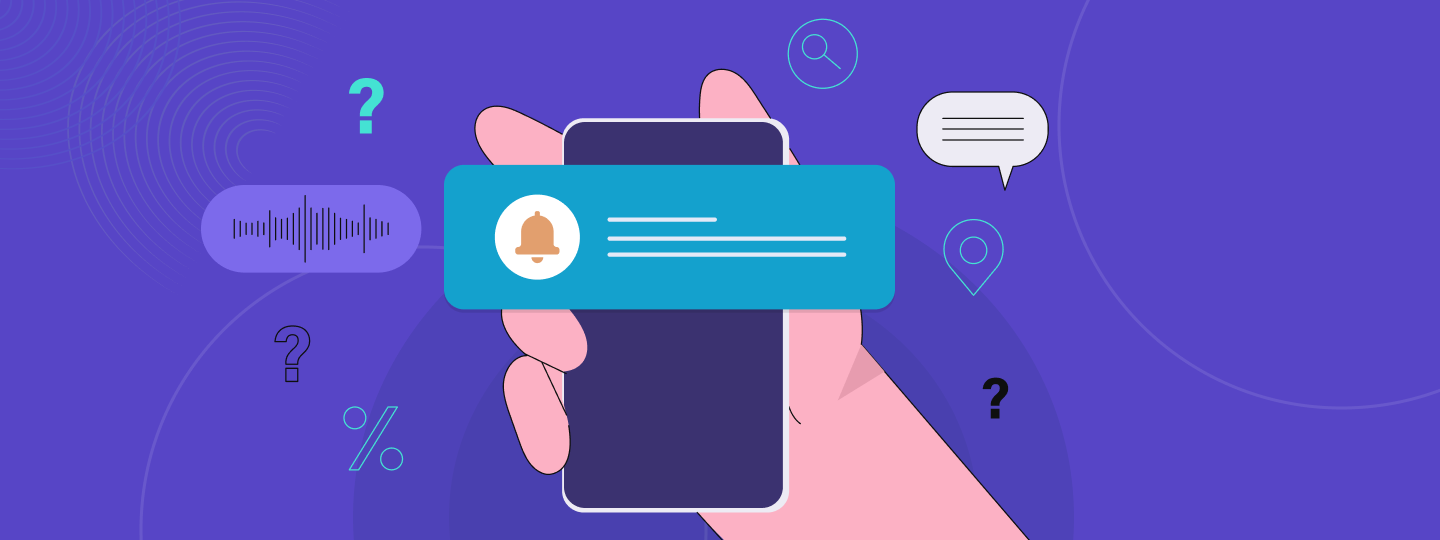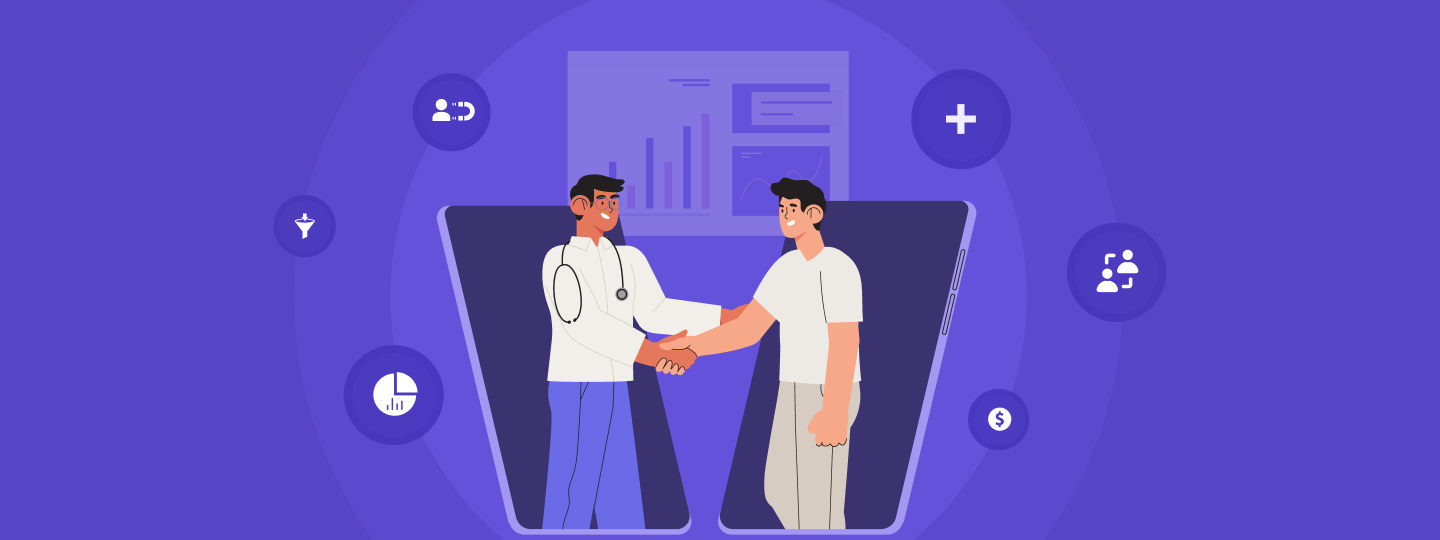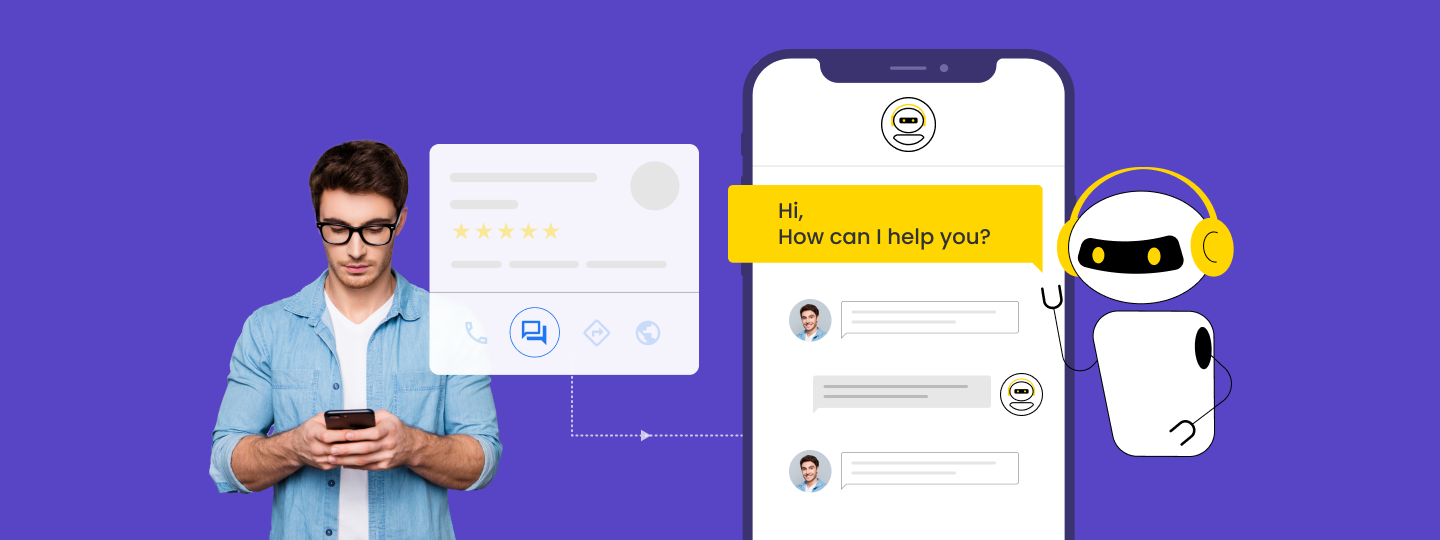Decidedly, there are two types of people in the world: The ones who ‘clear all notifications’ and the ones who clear one notification at a time. Either way, push notifications have become an integral part of our lives. Push notifications are short messages or alerts sent to users’ devices, such as smartphones, tablets, or computers, even when they are not actively using a particular application or website. These notifications “push” relevant information to the users, grabbing their attention and prompting them to engage with the content or take a specific action.
The primary purpose of push notifications is to deliver timely and personalized information directly to users, fostering engagement, retention, and conversion.
In this blog post, we will be looking at the key aspects of sending successful push notifications. You will have a comprehensive view of the critical factors that contribute to a push notification campaign.
Key Aspects Of Sending Effective Push Notifications

Crafting Compelling And Concise Messages
Crafting compelling and concise messages is absolutely key when it comes to successful push notifications. With limited space and users’ fleeting attention, your message needs to pack a punch. Here’s how to make your push notifications stand out:
First, grab attention right from the start. Use captivating language, action verbs, or intriguing snippets of information to hook your readers. Clearly communicate the value or benefit your notification offers, making it crystal clear what’s in it for the user. Keep it concise and focused, avoiding jargon or complex wording that might confuse or deter your audience.
Next, create a sense of urgency to drive immediate action. Highlight limited-time offers, upcoming deadlines, or time-sensitive events to tap into users’ fear of missing out. Remember to adapt your tone to match your brand’s personality and speak directly to your target audience. Consistency in tone helps build a stronger connection and reinforces your brand identity.
Finally, don’t rely on guesswork—test and optimize your push notification messages. Experiment with different variations, test their performance and analyze the data to uncover what resonates best with your audience. By constantly refining and optimizing your messages based on user engagement and conversion rates, you’ll maximize the impact of your push notifications and drive desired actions.
Personalization And Targeting Based On User Behavior
Personalization and targeting based on user behavior are game-changers when it comes to successful push notifications. By tailoring your messages to individual users and leveraging their behavior patterns, you can create a highly engaging and relevant experience. Here’s why it matters and how it can level up your push notification game:
Personalization adds a personal touch that makes users feel valued and understood. By using data on user preferences, demographics, or past interactions, you can create messages that resonate on a deeper level. Addressing users by name, referencing their previous purchases, or recommending content based on their interests shows that you genuinely care about their needs. This personal touch boosts engagement and fosters a stronger connection with your brand.
Targeting based on user behavior takes personalization to the next level. By analyzing how users interact with your app or website, you can send push notifications triggered by specific actions or patterns. Whether it’s reminding users of abandoned carts, celebrating completed milestones, or recommending products based on their browsing history, behavior-based targeting ensures that your messages align with users’ interests and intentions. This relevancy increases the chances of capturing their attention and driving them to take action.
To streamline the process, automated workflows can be set up. Predefined triggers and rules enable personalized push notifications to be sent automatically when certain conditions are met. This saves time and effort while maintaining consistency in your messaging. However, optimization is an ongoing process. Continuously analyze user data, monitor engagement rates, and refine your targeting strategies. By staying proactive and adapting to user behavior, you can continually optimize your push notifications to deliver maximum impact and drive meaningful user response.
Designing Visually Appealing Push Notifications
It is critical to design visually appealing push notifications in order to capture users’ attention and create a compelling user experience. Consider the following key points:
Begin with a simple and eye-catching layout that conveys the message in a clear and organized manner. For important elements, use a bold font or a larger font size to ensure readability. Consistent colors, fonts, and imagery should be used to align the visual elements with your brand identity. Include engaging images or icons that complement the message, using high-quality, easily recognizable visuals. Consider using subtle animations or motion to make the notifications more visually dynamic while keeping the main message in focus.
Maintaining consistency with your app or website design helps create a seamless user experience and reinforces brand recognition. Test the push notifications across different devices to ensure visual appeal and legibility. Conduct A/B testing with various designs to determine what resonates best with your audience. By following these tips and incorporating visually appealing elements, you can design push notifications that stand out, grab users’ attention, and enhance their overall experience.
Timing And Frequency Considerations
Timing and frequency are crucial considerations when it comes to sending effective push notifications. Here’s what you need to keep in mind:
Timing plays a significant role in the success of your push notifications. You want to send them at a time when users are most likely to be engaged and receptive. Consider factors such as time zones, user behavior patterns, and the nature of your message. For example, if you’re promoting a limited period sale, sending the notification a few hours before the sale ends can create a sense of urgency. Additionally, avoid sending push notifications during hours when users are less likely to be active like sleeping hours, to respect their privacy and avoid disruption.
Frequency is equally important. Bombarding users with too many push notifications can lead to annoyance and opt-outs. On the other hand, infrequent or sporadic notifications may result in users forgetting about your app or becoming disengaged. Striking the right balance is key. Tailor your frequency based on user preferences and the value of your notifications. Consider the relevance and importance of each message. For instance, important updates or time-sensitive offers may warrant more frequent notifications, while general announcements or non-urgent information may be better suited for less frequent communication.
To determine the optimal timing and frequency for your push notifications, it’s essential to gather data and insights. Analyze user engagement patterns, response rates, and feedback. Conduct A/B testing to experiment with different timing and frequency strategies. Keep an eye on user behavior metrics and adjust your approach accordingly. By finding the sweet spot that respects users’ preferences and aligns with their needs, you can ensure that your push notifications are well-timed, appropriately frequent, and effectively drive user engagement.
Localization And Language Customization
Localization and language customization are key for effective push notifications. By tailoring messages to specific regions and cultures, you ensure relevance and cultural sensitivity, capturing users’ attention. Customizing notifications in users’ preferred language creates a personalized experience, increasing engagement and conversion rates. It eliminates language barriers and fosters trust, enhancing the overall user experience. To illustrate, take for instance that a Japanese user has the TripAdvisor app downloaded on their phone. If TripAdvisor sends them push notifications in Japanese, they will be able to receive relevant information in the language they understand which will enhance their traveling experience as well as engagement with the app.
Moreover, localization and language customization contribute to a positive brand perception, building loyalty and advocacy. So, regularly analyze user data and feedback to fine-tune your strategies and ensure accurate translation and cultural adaptation. By leveraging localization and language customization, you create impactful push notifications that resonate with your target audience.
Clear Call-To-Action (CTA) implementation
A clear CTA directs users to take a specific action, such as making a purchase, signing up for a service, or exploring new content. By providing a direct and explicit instruction, you eliminate ambiguity and guide users towards the desired outcome. A well-crafted CTA ensures that users understand what action to take and increases the likelihood of their engagement.
A clear CTA also creates a sense of urgency or motivation for users to act. By using action-oriented words or phrases like “Shop Now,” “Book Today,” or “Learn More,” you prompt users to take immediate action. This urgency encourages users to click on the notification and fulfill the intended goal, leading to higher conversion rates.
Strategies for Improving Push Notification Engagement

- Utilizing rich media and interactive elements
- Implementing deep linking for seamless user experience
- A/B testing different variations of push notifications
- Leveraging user segmentation and behavior data
- Encouraging opt-ins and permission management
Best Practices For Crafting Compelling Push Notifications

- Craft attention grabbing content
- Adding emojis and visuals to enhance engagement
- Tailoring messages for different user segments
Overcoming Common Challenges In Push Notification Campaigns

Avoiding spammy or irrelevant content
Avoiding spammy or irrelevant content is crucial in push notification campaigns. To overcome this challenge, focus on delivering value-driven and personalized messages. Ensure that your notifications are relevant to the user’s interests, preferences, and past behaviors. Avoid generic or overly promotional content that may be perceived as spam. By providing meaningful and targeted information, you can grab users’ attention and increase engagement, making your notifications more valuable and less likely to be ignored.
Respecting user preferences and privacy
Respecting user preferences and privacy is paramount. Obtain explicit consent from users before sending push notifications and provide clear options to manage their notification settings. Allow users to choose their preferred frequency or content customization. Respecting their preferences builds trust and prevents your notifications from being perceived as intrusive. Implement robust data protection practices, adhere to privacy regulations, and be transparent about your data usage to ensure users feel confident in allowing notifications from your app.
Balancing frequency without overwhelming users
Balancing the frequency of push notifications without overwhelming users is essential for maintaining a positive user experience. Too many notifications can lead to annoyance and opt-outs. Strike a balance by carefully considering the relevance, timing, and importance of each message. Segment your audience and tailor the frequency based on user preferences and engagement patterns. Use data and analytics to monitor the impact of your notifications and adjust the frequency accordingly. By finding the sweet spot, you can ensure that your notifications remain valuable and welcomed by users.
Addressing platform-specific limitations
Addressing platform-specific limitations is another challenge in push notification campaigns. Each platform may have its own restrictions and guidelines regarding character limits, supported media formats, or delivery methods. Familiarize yourself with the platform’s requirements and optimize your notifications accordingly. Craft concise and impactful messages within the character limits, use media formats compatible with the platform, and utilize platform-specific features to enhance engagement. By understanding and adapting to these limitations, you can effectively deliver your message across different platforms.
Analyzing metrics and optimizing based on data
Analyzing metrics and optimizing based on data is crucial for the success of push notification campaigns. Monitor key performance indicators such as click-through rates, conversion rates, and user feedback to evaluate the effectiveness of your notifications. Use A/B testing to experiment with different variations and identify strategies that yield the best results. Continuously analyze the data to understand user behavior and preferences, and make informed decisions to optimize your notification strategy. By leveraging data-driven insights, you can refine your approach, deliver more engaging notifications, and achieve higher levels of user engagement.
Conclusion
Crafting effective push notifications requires attention to key aspects such as compelling messaging, personalization, visual appeal, timing, and targeting based on user behavior. By focusing on these elements, businesses can increase engagement and drive desired actions from their audience. In fact, Push notifications can increase website or app retention rate by 93%!
However, it’s important to remember that the push notification landscape is constantly evolving. Continuous improvement and experimentation are vital to stay ahead and deliver impactful messages. By analyzing metrics, conducting A/B testing, and adapting strategies based on data-driven insights, businesses can optimize their push notification campaigns for better results.
If you’re looking to enhance your push notification efforts, explore WebEngage, a comprehensive platform that empowers you to craft effective push notification campaigns and engage with your users in a meaningful way.
Take the next step and leverage the power of push notifications to drive success for your business.








 Vanhishikha Bhargava
Vanhishikha Bhargava
 Inioluwa Ademuwagun
Inioluwa Ademuwagun
 Dev Iyer
Dev Iyer